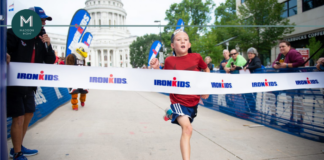Pregnancy and childbirth can affect a woman’s body in a multitude of ways – from incontinence to pelvic and lower back pain. While these issues are common, they aren’t normal and should absolutely be addressed and supported by a professional. SSM Health offers physical therapy services that specifically support new and expecting mothers, and help women work through pain, discomfort, bladder changes and other issues related to their pregnancy or birthing experience.
We had the opportunity to talk with SSM Health Physical Therapist, Katherine Hovanec, DPT, PRPC to learn more about the common issues facing new mothers, and how physical therapy can support their health and wellness. Many thanks to Katherine for sharing her expertise with us!
-
What are common issues expecting moms and/or new moms experience with their changing bodies?
New moms can face a variety of musculoskeletal issues that are related to pregnancy and delivery. Pregnant mothers often experience low back pain, pubic symphysis pain, and round ligament pain and these issues can linger into the postpartum period. New moms may also experience something called diastasis recti, which is a separation of the abdominal muscles that can occur from pregnancy which can contribute to low back and pelvic pain. New mothers may also experience bladder changes including leakage, increased frequency, and issues controlling the urge to make it to the bathroom. Many postpartum mothers have pain with sitting, gynecological exams, or sexual activity after having a baby. They may also have issues with bowel movements such as constipation, pain with bowel movements, and decreased ability to control bowel movements. Breastfeeding and care for a child can also create postural issues such as upper back pain and neck pain. 
-
How do you help support expecting/new moms through physical therapy? What are some of the exercises you do in sessions?
Physical therapy offers a one-on-one appointment with a specially trained therapist to address any musculoskeletal or pelvic floor concerns that a new mother may have. There are many different treatments that physical therapy can give patients. These may include an individualized therapeutic exercise program, postural and positioning suggestions, manual therapy, use of biofeedback for improving coordination of muscles, bladder and bowel retraining, and lifestyle/behavioral modifications to help with child care duties.
-
How common are issues such as incontinence, and what do you recommend for women facing these issues?
- Incontinence is extremely common postpartum and it can happen regardless of how you deliver. Research actually shows that rates of long-term incontinence are similar whether patients have a vaginal delivery or cesarean section. Various studies have shown that the rate of incontinence in postpartum women can be between 31-33% at 6 months post-delivery.
- A population-based study in Oregon found that 1 in 4 women had reported stool incontinence in the first 6 months after childbirth and they often reported that they also had issues controlling gas as well.
- Pelvic floor issues in general are more likely to occur if there was a longer second stage of labor, the mother has had multiple children, use of forceps, severity of perineal tear, and high birth weight.
- Approximately 64% of new moms have sexual problems at 6 months postpartum. One study from the UK showed that only 15% of patients brought these concerns up to their healthcare provider without prompting.
- Diastasis recti has been shown to occur in approximately 60% of women at the 6-week postpartum mark and around 32% have been shown to have it 12 months after delivery.
-
What’s the best plan of action for a new mom experiencing pain, discomfort or other pregnancy/childbirth related issues?
The best thing to know is that while bowel and bladder issues, pain with sexual activity, and low back/pelvic pain are common, they are NOT normal and there are treatments out there for you available. The first step is to reach out to your OB/GYN, midwife, or primary care physician to discuss your issue and ask for a referral to physical therapy. All the major healthcare networks in the Madison area employ pelvic health physical therapists, along with a few private practices. You will need to check with your insurance provider to see who is in the network for you.
When looking for a pelvic floor physical therapist, there are a few things you want to look for to make sure that they have had additional training in this area. They may have additional letters behind their name such as WCS (Women’s Health Specialist Certification) or PRPC (Pelvic Rehabilitation Practitioner Certification). You also want to ensure that they have taken extensive continuing education courses to specialize in this area. This is not an area of physical therapy that can be performed immediately after graduating from physical therapy school and it requires many hours of additional training to be able to treat patients.
-
Do you have any other information you can share with women about the benefits of physical therapy, or resources you’d recommend?
In my opinion, every new mom would benefit from having at least one appointment of physical therapy to make sure that they are on the right track after pregnancy and delivery. This is common practice in many other countries such as France, the Netherlands, and Australia. In our country, pregnancy and delivery aren’t treated like a medical event. Any other major surgery or medical issues would be treated with rest, coordinated follow up care, and often physical therapy. If you just had a total knee replacement or shoulder surgery, you are having physical therapy for usually a minimum of 10–12-week time frame. Why not a pregnancy and delivery? Your body spent 9 months undergoing musculoskeletal changes and then had a traumatic musculoskeletal event during delivery (whether that be vaginal delivery or cesarean section). It just makes sense to have some form of musculoskeletal rehabilitation afterwards. Your body will thank you in the short term, but also down the road when you are in your 60s and 70s. If I had a quarter for every person over the age of 55 who has told me “I wish I would have known about pelvic physical therapy when I had just had my baby” I could be planning my retirement right now.
Some postpartum exercise programs I like to recommend to my patients are:
- Expecting and Empowered
- MommaStrong
- GlowBodyPT
- MUTU System
- Restore Your Core


















